Yellowstone
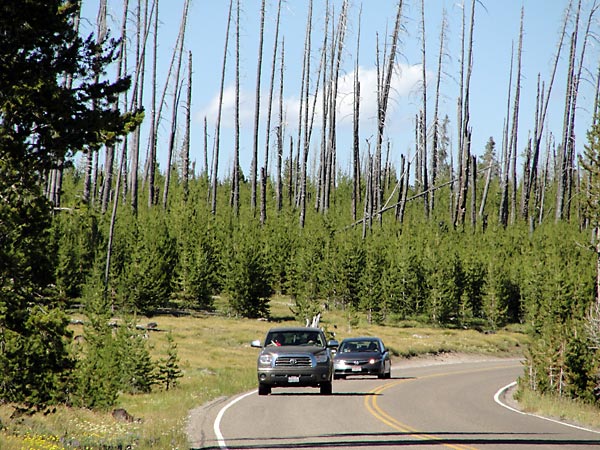
Driving into Yellowstone National Park, the first thing that struck me
was the regrowth of the forests since the fires of 1988 (we were here
then and saw some of it first hand). In many places we saw areas that
looked like this - trees killed by the fires, but their trunks are
still standing tall. Underneath is the new growth - trees ten to twenty
feet high.

A "must see" at Yellowstone is the Old Faithful geyser. This is the crowd expectantly waiting for it to erupt.

Old Faithful was indeed faithful and did erupt on schedule, give or
take a few minutes. Given the timing and length of one eruption, the
rangers can usually predict the timing of the next eruption to within
about 10 minutes. No, it doesn't go off at hourly intervals. The
interval after a short eruption is about 65 minutes and after a long
eruption is about 91 minutes.
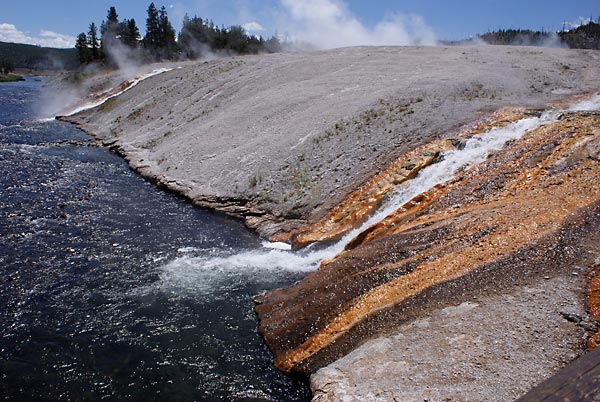
The Midway Geyser Basin was equally impressive. This is runoff of hot
water from the geysers and springs flowing into the Firehole River.
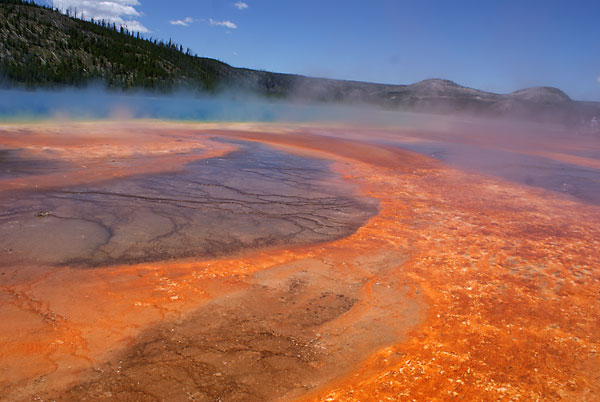
The Grand Prismatic Spring in the Midway Geyser Basin is very colorful.
It is a huge spring, about 200 feet across, with a deep blue center due
to sunlight being scattered by small particles in the water. The edge
of the spring is colored various shades of yellow, red, and brown
because of heat loving microorganisms; they contain pigments.
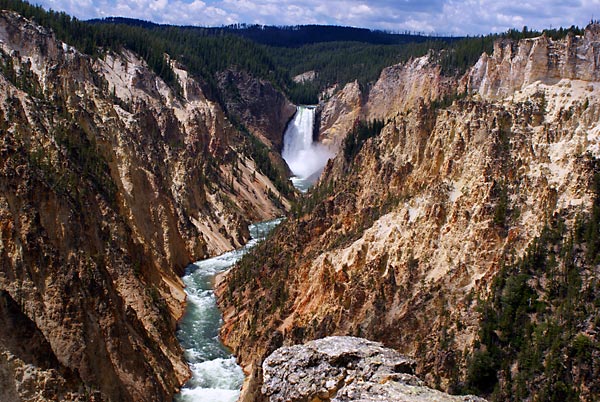
The Grand Canyon of the Yellowstone is a small version of the real
Grand Canyon, but still very impressive. It is about 800 - 1200 feet
deep, about 1500 - 4000 feet across, and about 25 miles long. On a
sunny day, it is very colorful. The falls seen here are the Lower
Falls, which are about 300 feet high.
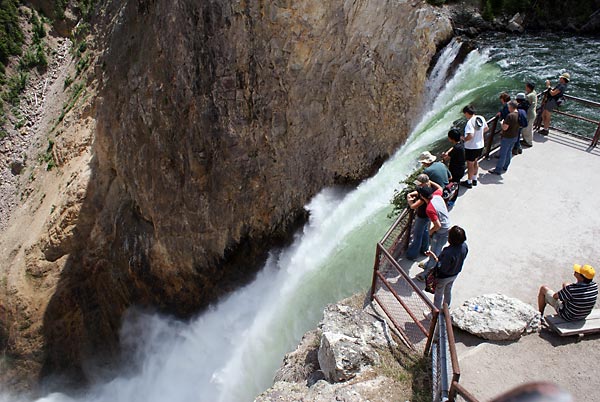
The brink of the Lower Falls is reached by a trail from the rim that drops 600 feet.
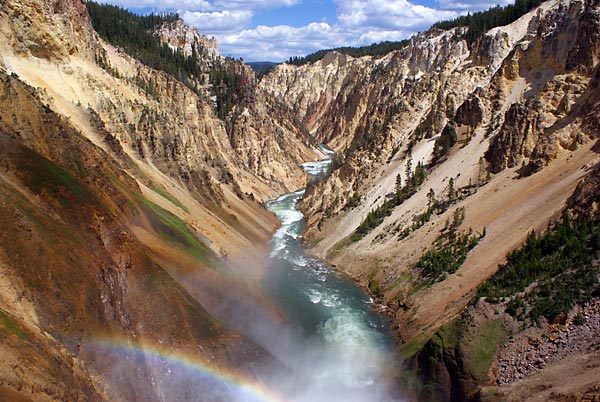
The view looking downstream from the brink of the Lower Falls. The rainbow is caused by mist from the falls.

In coming to a national park, one hopes to see some wild animals, and
we were not disappointed. This elk was taking a break from grazing in
the meadow, but kept a watchful eye on all the humans pointing cameras
at him.
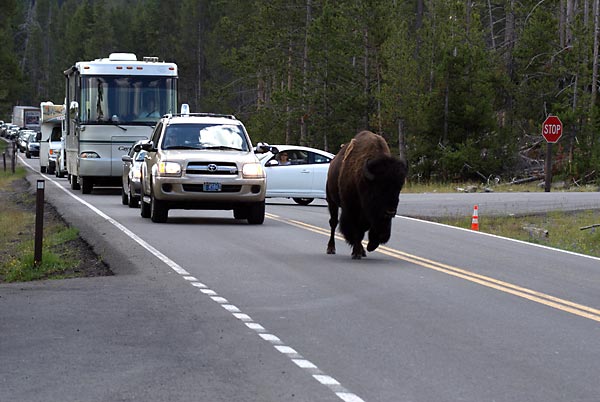
Buffalo were plentiful in the Hayden and Lamar valleys. They seem to
like to walk down the roads, which causes quite a traffic jam.

Guess who has the right of way in this situation - no, it is not us.
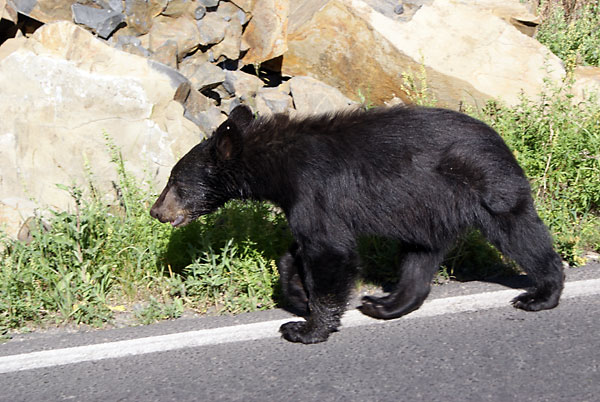
Unlike some earlier trips, we did see some bears, although this was the
only one that was close enough and out in the open to be able to
photogragh it. We had a total of seven bear sightings - one grizzly (we
think, but it was pretty far away) and six black bears. Most of the
bear activity was in the northeast part of the park, which is wilder
than the southern part. One evening in camp, our neighbors started
yelling "Bear alert, bear alert! Two bears are coming!" I grabbed my
camera and headed over to see what photo opps there might be. The bears
turned out to be two cubs about 300 yards away; they were headed our
way, but never came into the campground. So it turned out to be a bust.

Driving out the northeast entrance of the park, we saw this herd of
buffalo heading our way and moving along at a pretty good clip. It
seemed they were being herded by the cars driving along behind them.
What does one do in this situation? We stopped our van in the middle of
the lane, hoping they would simply walk around us, which they did.












